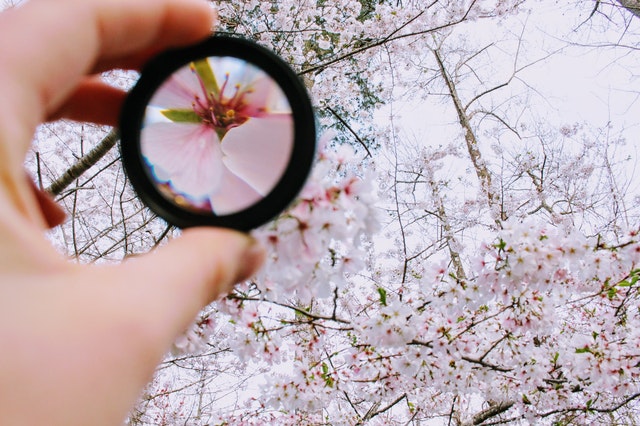Who hasn’t heard about Sherlock Holmes- the critical sleuth? There would be hardly any person who hasn’t known him, have you? Of course, you have. But why are we talking about him? That’s because of his critical observation skills and how one clue led to another until the mystery resolved. Over the years, equivalent Critical Observation skills have become an intrinsic part of the workplace.
First things first, critical observation is not the twin sister of critical thinking. While critical thinking refers to analyzing a situation to come to a discretion, Critical Observation incorporates the use of senses to look at a person, thing, or situation to assimilate new information.
Knowing that, delve in to acquaint yourself with Critical Observation and how it works in miraculous ways as you hone your senses and be more vigilant.

Delve in now!
WHAT ARE CRITICAL OBSERVATION SKILLS?
Critical Observation skill is the act of scouting things with high sensitive vigilance- whether checking the market trends, change in people’s behaviour, or assessing a problem before it becomes a crisis. Put in other words, it is the ability of a person to look at things to observe subtleties in a way to handle situations or people more tactfully.
It requires filtering out the relevant information while disparaging the trivial data so emphasis can be extended to what is meaningful and what has significance.
Day-to-day leadership and leadership positions require this capacity to apply thought to provide guidance, propose next steps, bring wellbeing and peace in times of uncertainty.
CRITICAL OBSERVATION SKILL AT WORKPLACE
Critical Observation is a core component for innovation and problem-solving. Thus, it is a vital ingredient for any business. Whether it accounts for changes in the industry or trends or noticing customer changes- critical observation skills stand erect. Extending its scope, it even becomes indispensable for incumbent managers to keep a check on the employees.

Stating an evident example from the workplace, a manager took apprehension that a diligent female employee always sagged at work for 2-3 days at the office every month. Oblivious of the fact, for one, he could reprimand the employee for her lack of interest in work.
By contrast, looking at the problem with a critical lens made the manager realize the monthly problem she faced. While it may be natural, yet the pain was unbearable for her. Considering which, the manager granted work from home for those three days, should she give her best while being at the comfort of her home.
HOW TO IMPROVE CRITICAL OBSERVATION SKILLS?
ALL EARS
Open your mind and ears. Don’t just listen, but practice active listening. Active listening is the capacity to listen to individuals attentively and try to learn them first. It demands that the listener reflect on what is being said, show that they are listening, and affirm their comprehension.
To listen actively, in other words, you have to pay attention to. You can’t multitask, you can’t prevent contact with the eyes, you can’t assume, and you can’t formulate responses in your brain. You have to be attentive and listen actively.
AROUSE CURIOSITY

It may sound simple, but interest is the first answer to the observation of some kind. Take attention to the person or thing with whom you communicate, and it’ll be easier to spot things that you would otherwise overlook.
For example, reading a book or a newspaper or researching a subject should not just be for the sake of it. Should you generate curiosity about the subject or the news, the learning or outcome would be much rampant and relevant.
LOOK AT THE WIDER PICTURE
It’s all very well to notice information in individuals and their actions,
but it’s important to consider how it falls into every organization’s broader picture. Continuing with the above-listed example, the manager doesn’t only have to look for the company trends and benefits. But, at the same time, scrutinize the employee’s behavior that makes for the whole company.
DOWN TO THE GRASSROOTS LEVEL
People who are keen analysts of systems have the skill to “get to the bottom of things.” Even though the cause is not apparent to the casual observer, they will key in on the cause of a problem. By instructing them in a framework such as “The 5 Whys( WHAT, WHERW, WHY, HOW, AND WHEN),” which they can use to discover actionable answers to challenges, you can prepare workers to get this knack.”
I’ll remember, too, that the better the vital observation your workers receive, the better they will find answers to “why?” “Questions!
INTERPRETING ISSUE DIFFERENTLY
Not all questions have clear solutions, and not all challenges are fixed quickly. It takes a healthy dose of imagination often to realize what the true challenge is, and how to solve it. This, too, is a vital capacity to be educated in observation, and doing so also has a significant effect on the bottom line.
This brings the end of this Blog. Thanks for reading. We really appreciate your time.
Do visit our page www.zigya.com/blog for more interesting articles
We would love to hear from you. Please share your feedback and comments below.
Keep Reading! Cheers!
Zigya Academy
BEING RELEVANT